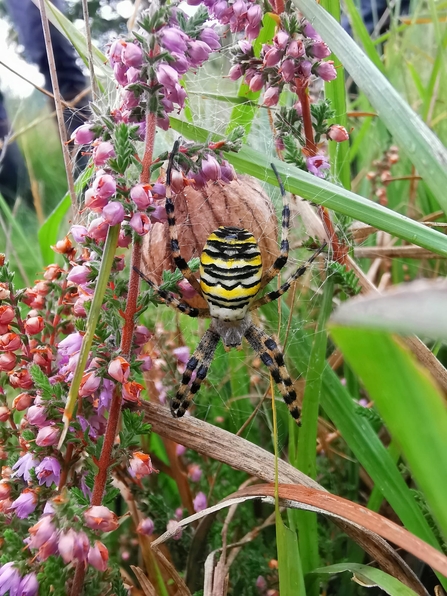The most notable feature of the wasp spider is its vivid coloration. The female, which is much larger than the male, displays bright yellow, black, and white stripes on her abdomen, closely resembling the warning colours of a wasp. This mimicry serves as a form of protection, deterring predators who might mistake the spider for a more dangerous insect. The male, in contrast, is much smaller and less colourful, often brown or beige, and is rarely seen due to his habit of hiding in the vegetation near the female's web.
Wasp spiders are typically found in grasslands, meadows, and other open areas where they can build their large, circular webs. These webs are often constructed close to the ground, and they feature a distinctive zigzag pattern, known as a ‘stabilimentum’ although the function of this is unclear.
The wasp spider's diet consists mainly of grasshoppers, crickets, and other small insects. Once an insect becomes ensnared in the web, the spider quickly immobilizes it by wrapping it in silk before delivering a venomous bite. This venom, while potent for small prey, is harmless to humans.


